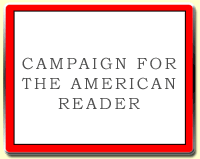Her other books include Rhapsody in Plain Yellow (Paterson Book Prize, 2003), The Phoenix Gone, the Terrace Empty (P.E.N. Josephine Miles Award, 1994) and Dwarf Bamboo (nominated for the Bay Area
 Book Reviewer's Award in 1987). Her books have become Asian American classics and are taught in numerous classrooms nationally. She also co-edited Dissident Song, a Contemporary Asian American Anthology (1991) and co-translated The Selected Poems of Ai Qing, Indiana University Press, 1985. Her poetry has been anthologized in The Oxford Anthology of Modern American Poetry, the Norton Anthology of Modern Poetry, the Norton Introduction to Literature, and The Best American Poetry 1996, edited by Adrienne Rich, among others. She is a recipient of a Radcliffe Institute Fellowship from Harvard, a Stegner fellowship from Stanford, two National Endowment for the Arts fellowships, a Fulbright Fellowship to Taiwan, a Lannan residency, four Pushcart Prizes and the Mary Roberts Rinehart award in creative writing. She has received residencies at Yaddo, the MacDowell Colony, the Djerassi Foundation, the Virginia Center for the Creative Arts, Centrum, Blue Mountain Center for the Arts and Villa Montalvo.
Book Reviewer's Award in 1987). Her books have become Asian American classics and are taught in numerous classrooms nationally. She also co-edited Dissident Song, a Contemporary Asian American Anthology (1991) and co-translated The Selected Poems of Ai Qing, Indiana University Press, 1985. Her poetry has been anthologized in The Oxford Anthology of Modern American Poetry, the Norton Anthology of Modern Poetry, the Norton Introduction to Literature, and The Best American Poetry 1996, edited by Adrienne Rich, among others. She is a recipient of a Radcliffe Institute Fellowship from Harvard, a Stegner fellowship from Stanford, two National Endowment for the Arts fellowships, a Fulbright Fellowship to Taiwan, a Lannan residency, four Pushcart Prizes and the Mary Roberts Rinehart award in creative writing. She has received residencies at Yaddo, the MacDowell Colony, the Djerassi Foundation, the Virginia Center for the Creative Arts, Centrum, Blue Mountain Center for the Arts and Villa Montalvo. Chin is a professor in the Department of English and Comparative Literature at San Diego State University.
Chin is a professor in the Department of English and Comparative Literature at San Diego State University.Earlier this month I asked her what she was reading. Her reply:
I am a poet who is cross-dressing into writing fiction. Therefore, my reading shelf is, to say the least, eclectic:Read Chin's poems "How I Got That Name," "The Floral Apron," and "Gruel."
At this moment, I am re-reading favorite books. Here are three important books on my shelf that I revisit often:
First of all, I am rereading Cane by Jean Toomer, Liveright edition, with Darwin Turner's introduction. The book is a compilation of poetic prose vignettes,mixed with poetry and spirituals. A good example of a hybrid esthetics. This Harlem Renaissance gem was rediscovered in the 60s. I want to give a shout out to this book and encourage all poets and fiction writers to read it.
I am also reading The Penguin Book of the Sonnet, edited by Phillis Levin. It is a solid historical survey of the sonnet with a very thorough introduction. Why am I reading this exhaustive anthology? Of course, I intend to write some sonnets soon and need to research and bone up on the profound history of the form. The introduction is hefty, with a thorough discussion of the form. It's a very useful anthology.Of course, I, a Chinese American poet, am always reading something Chinese. Pu Songling, the Edgar Allan Poe of Chinese Literature, wrote numerous weird ghost tales in the 17th century. The selection that I love is the Penguin Classics edition, Strange Tales From a Chinese Studio, translated by John Minford. Most of the tales will not make sense to you, but keep reading, you will enjoy their absurd Taoist logic. Or not.
--Marshal Zeringue




